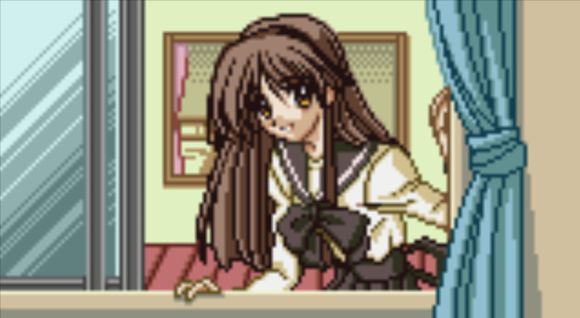
不知不觉已到了八月,不知道说什么,冲冲冲!
在首次尝试抄写刘彦佐前辈博客中的Js轮播图后,大致了解了 HTML与 CSS的流程,
也通过博客中的JS部分学习了几个重要的api(或者叫函数function),列如
setTimeOut(),clearTimeOut(),setInterval(),clearInterval(),
parseInt()….这是第二次练习轮播图,在改变偏移值实现轮播的基础上再加上一些自己的东西,
也希望自己尽量少的查看源码来实现,当然,第二次肯定还是会有细节出现遗漏的
情况,只是希望能少些。这个轮播图代码刘彦佐前辈本人是这样说的
讲的是用面向过程函数式编程去实现,相对于面向对象设计模式,代码难免会显得臃肿冗余。但没有面向对象的抽象却很适合新手理解与学习
这句话我也能大概通过另一个轮播图实现感觉到,希望在后面的学习实践中更加理性的认识和理解这句话。
感谢刘彦佐前辈的分享
写完我觉得有必要加上过渡,虽然我还不会,最后的”闭包”环节也有待理解
- 该轮播图原理如下

正题↓
HTML部分
1.先使用一个母盒container
2.图片盒list->imgx( x为pictures数目 )
3.按钮盒buttons->spany( y为具体buttons数目 )
4.箭头盒arrow 左右两个
5.list的left属性是轮播的关键,它的偏移值(value)会让container盒子里的img发生变化,从而实现切换
6.buttons里的span带有的类名为”on”的属性,是让按钮随着轮播进行变换的关键
<div class="container" id="container">
<div class="list" id="list" style="left: 0px">
<img src="img/1.jpg" alt="1">
<img src="img/2.jpg" alt="2">
<img src="img/3.jpg" alt="3">
<img src="img/4.jpg" alt="4">
<img src="img/5.jpg" alt="5">
</div>
<div class="buttons" id="buttons">
<span index = "1" class= "on"></span>
<span index = "2";></span>
<span index = "3";></span>
<span index = "4";></span>
<span index = "5";></span>
</div>
<a href="javascript:;" class="arrow" id="prev"><</a>
<a href="javascript:;" class="arrow" id="next">></a>
</div>
CSS部分
1.建立初始化CSS
2.主盒子container的宽高取决于你要选取的大小
3.为了使list的核心属性left能够生效,需要给list添加绝对定位,自然父元素container也需要添加相对定位*
4.当list受到container定位关系的管制后,我们还需要为container添加超出隐藏
5.从轮播图的设计来看,箭头arrow和button按钮都应该在图的上方,因为我们需要点击它们来对图进行操作,
所以 list(z-index:1) arrow(z-index:2) buttons(z-index:2)
6.因list已添加了绝对定位和层级,所以后续的标签想要显现出来不仅需要z-index,还需要进行脱离文档流的设置
(脱离文档流采用浮动和定位皆可)
7.介于是练习阶段并没有专业的UI设计,关于按钮span和arrow箭头的设计取决于开发者的个人审美水平和取向,应
多加涉及和思考&尝试
8.箭头的设计理念为鼠标放在轮播区域即显示,放在轮播区外即隐藏,so……u know how to deal with this!
*{
margin: 0;
padding: 0;
text-decoration: none;
list-style-type: none;
}
.container{
position: relative;
width: 1000px;
height: 400px;
margin: 100px auto 0 auto;
border: 2px solid #000;
overflow: hidden;
}
.list{
position: absolute;
width: 5000px;
height: 400px;
z-index: 1;
}
.list img{
width: 1000px;
height: 400px;
float: left;
}
.buttons{
z-index: 2;
position: absolute;
width: 300px;
height: 50px;
bottom: 0;
left: 346px;
}
.buttons span{
float: left;
width: 40px;
height: 30px;
margin-left: 14px;
background-color: #000;
border-radius: 50%;
border: 1px solid #fff;
cursor: pointer;
}
.buttons .on{
background-color: orangered;
}
.arrow{
display: none;
z-index: 2;
position: absolute;
width: 80px;
height: 80px;
font-size: 105px;
font-weight: bold;
text-align: center;
line-height: 65px;
top: 160px;
color: #fff;
background: rgba(0, 0, 0, 0.3);
}
.arrow:hover{
background: rgba(0, 0, 0, 0.7);
}
.container:hover .arrow{
display: block;
}
#next{
right: 0;
}
到这里该轮播图的页面部分已完成,接下来重点练习环节
JS部分
1.由于抓取dom元素在编写Js中非常频繁,所以我们将document.getElementById()进行封装
/*封装函数 */
function ById(id){
return typeof(id)? document.getElementById(id):'id';
}
function ByTagName(tagName){
return typeof(tagName)? document.getElementsByTagName(tagName):'tagName'
}
2.抓取DOM元素
var container = ById('container'),
list = ById('list'),
prev = ById('prev'),
next = ById('next'),
timer, //后续会用到
index = 1;//后续会用到
var buttons = ByTagName('span');
3.进行左右箭头切换图片的功能编写
1)这里parseInt()获取的值是一个整数,而list.style.left获取的是相对于左边的距离
2)style.left获取的是字符串,需要用parseInt()取整转化为数字
3)不要想当然的认为prev向前一张图就添加负数,next同理.增加偏移值是作用在list上
4)绑定左右箭头事件
/* 偏移值变换*/
function mov(value){
var newLeft = parseInt(list.style.left) + value;
list.style.left = newLeft + 'px';
}
prev.onclick = function(){
mov(1000);
}
next.onclick = function(){
mov(-1000);
}
4.first与last的回滚
1)在这段代码中,偏移值小于-4000图片就会出现空白,大于0也是,因为我们需要做一个简单的判断
2)但要注意,这个判断是要放在 mov函数里面的,逻辑问题**
if(newLeft<-4000){
list.style.left = 0 + 'px';
}
if(newLeft>0){
list.style.left = -4000 + 'px';
}
5.自动轮播函数
1)利用库函数定时器构建自动轮播,
function play(){
timer = setInterval(function(){
next.onclick()
},2000)
}
play();
6.清除轮播
1)clearInterval()方法的参数必须是由setInterval()返回的ID值**
function stop(){
clearInterval(timer);
}
container.onmouseover = stop;
container.onmouseout = play;
7.圆点响应
1)buttonsShow函数让每次更换图片下面的圆点都会全部变黑,然后通过index的值让特定的圆点变色,顺序搞清楚很重要
2) buttons[index-1].className = ‘on’; 这段代码写在for循环里也可以,外面也可以.不影响功能,但里面却影响了性能
function buttonsShow(){
for(var i = 0;i< buttons.length;i++){
if(buttons[i].className = 'on'){
buttons[i].className = '';
}
}buttons[index-1].className = 'on';
}
3)由于引入了圆点,index. prev和next的箭头事件需要增加内容,分别改为:
prev.onclick = function(){
index -=1;
if(index<1){ //圆点和图一样,first和last需要进行判断来达到回滚
index = 5;
}
buttonsShow();
mov(1000);
}
next.onclick = function(){
index+=1;
if(index>5){ //圆点和图一样,first和last需要进行判断来达到回滚
index = 1;
}
buttonsShow();
mov(-1000);
}
到这里为止,我们已经完成了自动轮播,左右箭头播放。圆点虽然能够能够根据图片的变换进行响应变色,但圆点本身还是不能进行点击选取播放。下面的代码就完成了该功能。
8.这里使用了闭包,我暂时还没有搞太清楚。
for (var i = 0; i < buttons.length; i++) {
// 这里使用的是立即执行函数,
(function(i) {
buttons[i].onclick = function() {
var clickIndex = parseInt(this.getAttribute('index'));
console.log(clickIndex);
var value = 1000 * (index - clickIndex);
mov(value);
index = clickIndex;
buttonsShow();
}
})(i)
}
大功告成,一个完整的轮播图就这样完成了。我知道这不短,但是按照步骤一点点编写,一边写一遍思考。一遍不行就两遍,两遍不行就三遍。它迟早是你的。
最后
如果觉得分离开的代码不够,在我的github上有完整代码GITHUB
喜欢的话,给个star吧!